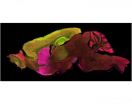(Press-News.org) Suicide has been on the increase recently in the United States, currently accounting for almost 40,000 deaths a year. A new study shows that one successful effort to avoid suicide attempts would be to focus on correcting the distorted, catastrophic thoughts about the future that are held by many who try to kill themselves. Such thoughts are unique and characteristic to those who attempt suicide, says Shari Jager-Hyman of the University of Pennsylvania Perelman School of Medicine in the US. Jager-Hyman led a study, published in Springer's journal Cognitive Therapy and Research, about how distorted thoughts influence suicidal behaviors in patients who seek emergency psychiatric treatment.
The research team recruited a relatively large and ethnically diverse group of 168 participants from emergency departments or psychiatric inpatient units in Philadelphia. Of these, 111 people had attempted suicide in the 30 days prior to the study. The other 57 participants were receiving emergency psychiatric treatment, but had not tried to commit suicide in the two years prior to the study. The research study is the first to use the Inventory of Cognitive Distortions, a 69-item self-report questionnaire designed to be used among various clinical populations, to measure cognitive distortions in people who have recently tried to commit suicide.
The study found that people who attempt suicide are more likely to have distorted thoughts than others. These include the way in which they think about their own self-worth, how they negatively compare themselves to others, and how they generally slap derogatory labels on themselves. This is true even when the effects of depression and feelings of hopelessness are taken into account. The findings add weight to the many theories presented over decades that suicidal people have unique cognitive styles by which they misinterpret or wrongly process experiences or stimuli.
Uniquely, people who made suicide attempts were found to be especially prone to so-called "fortune telling," through which they predict and firmly believe that bad things will happen in the future. Fortune telling is akin to catastrophizing, and does not consider other, more probable outcomes. Importantly, when the researchers took thoughts of hopelessness into account, fortune telling was no longer strongly linked to suicidal attempts. Jager-Hyman and her colleagues believe this is because fortune telling and hopelessness may be overlapping constructs or ideas which share the fear of negative future events.
"To prevent suicides, therapists would benefit from directly targeting patients' thoughts of hopelessness in clinical interventions," says Jager-Hyman. "A cognitive approach can help patients evaluate their beliefs that negative outcomes will inevitably occur, and show them how to entertain other possible options. This can help to minimize patients' thoughts of hopelessness, help them to cope better, and ideally decrease their suicidal ideation and behaviors."
INFORMATION:
Reference:
Jager-Hyman, S. et al. (2014). Cognitive Distortions and Suicide Attempts, Cognitive Therapy and Research, DOI 10.1007/s10608-014-9613-0.
Catastrophic thoughts about the future linked to suicidal patients
People who attempt suicide were more likely to have distorted thoughts than others
2014-04-28
ELSE PRESS RELEASES FROM THIS DATE:
Identification of genetic mutations involved in human blood diseases
2014-04-28
A study published today in Nature Genetics has revealed mutations that could have a major impact on the future diagnosis and treatment of many human diseases. Through an international collaboration, researchers at the Montreal Heart Institute (MHI) were able to identify a dozen mutations in the human genome that are involved in significant changes in complete blood counts and that explain the onset of sometimes severe biological disorders.
The number of red and white blood cells and platelets in the blood is an important clinical marker, as it helps doctors detect many ...
Stanford scientists create circuit board modeled on the human brain
2014-04-28
The Neurogrid circuit board can simulate orders of magnitude more neurons and synapses than other brain mimics on the power it takes to run a tablet computer.
Stanford scientists have developed a new circuit board modeled on the human brain, possibly opening up new frontiers in robotics and computing.
For all their sophistication, computers pale in comparison to the brain. The modest cortex of the mouse, for instance, operates 9,000 times faster than a personal computer simulation of its functions.
Not only is the PC slower, it takes 40,000 times more power to run, ...
Using a foreign language changes moral decisions
2014-04-28
Would you sacrifice one person to save five? Such moral choices could depend on whether you are using a foreign language or your native tongue.
A new study from psychologists at the University of Chicago and Pompeu Fabra University in Barcelona finds that people using a foreign language take a relatively utilitarian approach to moral dilemmas, making decisions based on assessments of what's best for the common good. That pattern holds even when the utilitarian choice would produce an emotionally difficult outcome, such as sacrificing one life so others could live.
"This ...
UEA research shows bacteria combat dangerous gas leaks
2014-04-28
Bacteria could mop up naturally-occurring and man-made leaks of natural gases before they are released into the atmosphere and cause global warming - according to new research from the University of East Anglia.
Findings published today in the journal Nature shows how a single bacterial strain (Methylocella silvestris) found in soil and other environments around the world can grow on both the methane and propane found in natural gas.
It was originally thought that the ability to metabolize methane and other gaseous alkanes such as propane was carried out by different ...
How to create nanowires only 3 atoms wide with an electron beam
2014-04-28
Junhao Lin, a Vanderbilt University Ph.D. student and visiting scientist at Oak Ridge National Laboratory (ORNL), has found a way to use a finely focused beam of electrons to create some of the smallest wires ever made. The flexible metallic wires are only three atoms wide: One thousandth the width of the microscopic wires used to connect the transistors in today's integrated circuits.
Lin's achievement is described in an article published online on April 28 by the journal Nature Nanotechnology. According to his advisor Sokrates Pantelides, University Distinguished Professor ...
First disease-specific human embryonic stem cell line by nuclear transfer
2014-04-28
NEW YORK, NY (April 28, 2014) – Using somatic cell nuclear transfer, a team of scientists led by Dr. Dieter Egli at the New York Stem Cell Foundation (NYSCF) Research Institute and Dr. Mark Sauer at Columbia University Medical Center has created the first disease-specific embryonic stem cell line with two sets of chromosomes.
As reported today in Nature, the scientists derived embryonic stem cells by adding the nuclei of adult skin cells to unfertilized donor oocytes using a process called somatic cell nuclear transfer (SCNT). Embryonic stem cells were created from one ...
UCLA scientists hunt down origin of Huntington's disease in the brain
2014-04-28
The gene mutation that causes Huntington's disease appears in every cell in the body, yet kills only two types of brain cells. Why? UCLA scientists used a unique approach to switch the gene off in individual brain regions and zero in on those that play a role in causing the disease in mice.
Published in the April 28 online edition of Nature Medicine, the research sheds light on where Huntington's starts in the brain. It also suggests new targets and routes for therapeutic drugs to slow the devastating disease, which strikes an estimated 35,000 Americans.
"From ...
The scent of a man
2014-04-28
Scientists' inability to replicate research findings using mice and rats has contributed to mounting concern over the reliability of such studies.
Now, an international team of pain researchers led by scientists at McGill University in Montreal may have uncovered one important factor behind this vexing problem: the gender of the experimenters has a big impact on the stress levels of rodents, which are widely used in preclinical studies.
In research published online April 28 in Nature Methods, the scientists report that the presence of male experimenters produced a ...
Mount Sinai scientists identify first gene linked to heart muscle disease in children
2014-04-28
Scientists at Icahn School of Medicine at Mount Sinai, along with collaborators at institutions in India, Italy, and Japan, have identified the first gene linked to childhood-onset familial dilated cardiomyopathy (DCM), one of the most common heart muscle diseases in children. It is a progressive and potentially fatal heart condition resulting from an enlarged and weakened heart muscle.
The study, published in Nature Genetics, also revealed a link between DCM and excessive activation of the protein, mTOR. Currently, there are several existing FDA-approved blocking ...
Viral 'parasites' may play a key role in the maintenance of cell pluripotency
2014-04-28
In a study published in Nature Genetics, scientists from the RIKEN Center for Life Science Technologies in Japan, in collaboration with the RIKEN Center for Integrative Medical Sciences, the University of Copenhagen and the Joint Genome Institute (Walnut Creek, California) have discovered that "jumping DNA" known as retrotransposons—viral elements incorporated into the human genome—may play a key role in the maintenance of pluripotency, the ability of stem cells to differentiate into many different types of body cells.
This story is part of a fundamental rethinking taking ...
LAST 30 PRESS RELEASES:
Sports injuries sustained during your period might be more severe
World's first successful 2 Tbit/s free-space optical communication using small optical terminals mountable on satellites and HAPS
Can intimate relationships affect your heart? New study says ‘yes’
Scalable and healable gradient textiles for multi‑scenario radiative cooling via bicomponent blow spinning
Research shows informed traders never let a good climate crisis go to waste
Intelligent XGBoost framework enhances asphalt pavement skid resistance assessment
Dual-function biomaterials for postoperative osteosarcoma: Tumor suppression and bone regeneration
New framework reveals where transport emissions concentrate in Singapore
NTP-enhanced lattice oxygen activation in Ce-Co catalysts for low-temperature soot combustion
Synergistic interface engineering in Cu-Zn-Ce catalysts for efficient CO2 hydrogenation to methanol
COVID-19 leaves a lasting mark on the human brain
Scientists use ultrasound to soften and treat cancer tumors without damaging healthy tissue
Community swimming program for Black youth boosts skills, sense of belonging, study finds
Specific depressive symptoms in midlife linked to increased dementia risk
An ‘illuminating’ design sheds light on cholesterol
Who is more likely to get long COVID?
Study showcases resilience and rapid growth of “living rocks”
Naval Research Lab diver earns Office of Naval Research 2025 Sailor of the Year
New Mayo-led study establishes practical definition for rapidly progressive dementia
Fossil fuel industry’s “climate false solutions” reinforce its power and aggravate environmental injustice
Researchers reveal bias in a widely used measure of algorithm performance
Alcohol causes cancer. A study from IOCB Prague confirms damage to DNA and shows how cells defend against it
Hidden viruses in wastewater treatment may shape public health risks, study finds
Unlock the power of nature: how biomass can transform climate mitigation
Biochar reshapes hidden soil microbes that capture carbon dioxide in farmland
Reducing saturated fat intake shows mortality benefit, but only in high-risk individuals
Manta rays create mobile ecosystems, study finds
Study: Mixed results in using lipoic acid to treat progressive multiple sclerosis
Norbert Holtkamp appointed director of Fermi National Accelerator Laboratory
New agentic AI platform accelerates advanced optics design
[Press-News.org] Catastrophic thoughts about the future linked to suicidal patientsPeople who attempt suicide were more likely to have distorted thoughts than others


